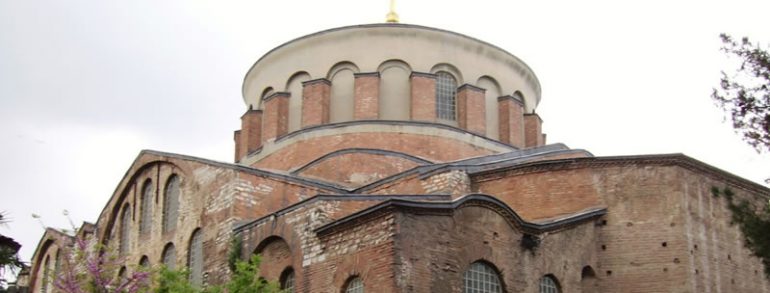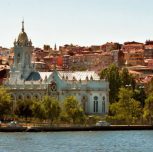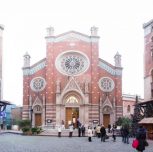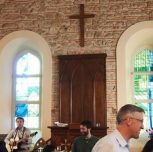Right after the Hagia Sofia, St.Irene is the second largest and oldest church from the Byzantine era still standing in Istanbul.
Emperor Constantine the Great commissioned St.Irene, which was one of the largest and oldest Byzantine churches along with Hagia Sofia, in 330.
The church takes its name from a saint who was at that time working for the spread of Christianity. A group of pagans tried to kill Saint Irene by first throwing him into a well full of snakes and later dragging him over the ground while stoning him.
But in spite of the pagans’ efforts, Irene miraculously survived. Upon witnessing these supernatural occurrences, the majority of the pagans converted to Christianity and Irene became a saint in the eyes of the people. Emperor Constantine, who propagated Christianity as the single religion of the Roman Empire, named his church after this saint.
The church was first built from wood, but was burned down during the Nike Revolt of 532. Although the Emperor Justinian had the St. Irene restored together with Hagia Sofia, it was later to suffer significant damage in fires and earthquakes.
Fortunately, the church was renovated each time that it was damaged, and, after the conquest of Constantinople, remained within the walls of the Topkapı Palace courtyard. For a long period, St. Irene was used as a weapons depot; finally, in 1869, it was converted into a museum.
It thereby became the first museum of the Ottoman Empire, and has been used as such for quite a long time. Furthermore, it is the only church surviving today with an atrium (in other words, it is lit from above through small windows).
This ethereal building can only be toured with special permission, which can be acquired at the Hagia Sofia Museum. Due to its extraordinary acoustics, it often plays host to a variety of concerts and cultural/artistic events.
Source: www.istanbul.com









